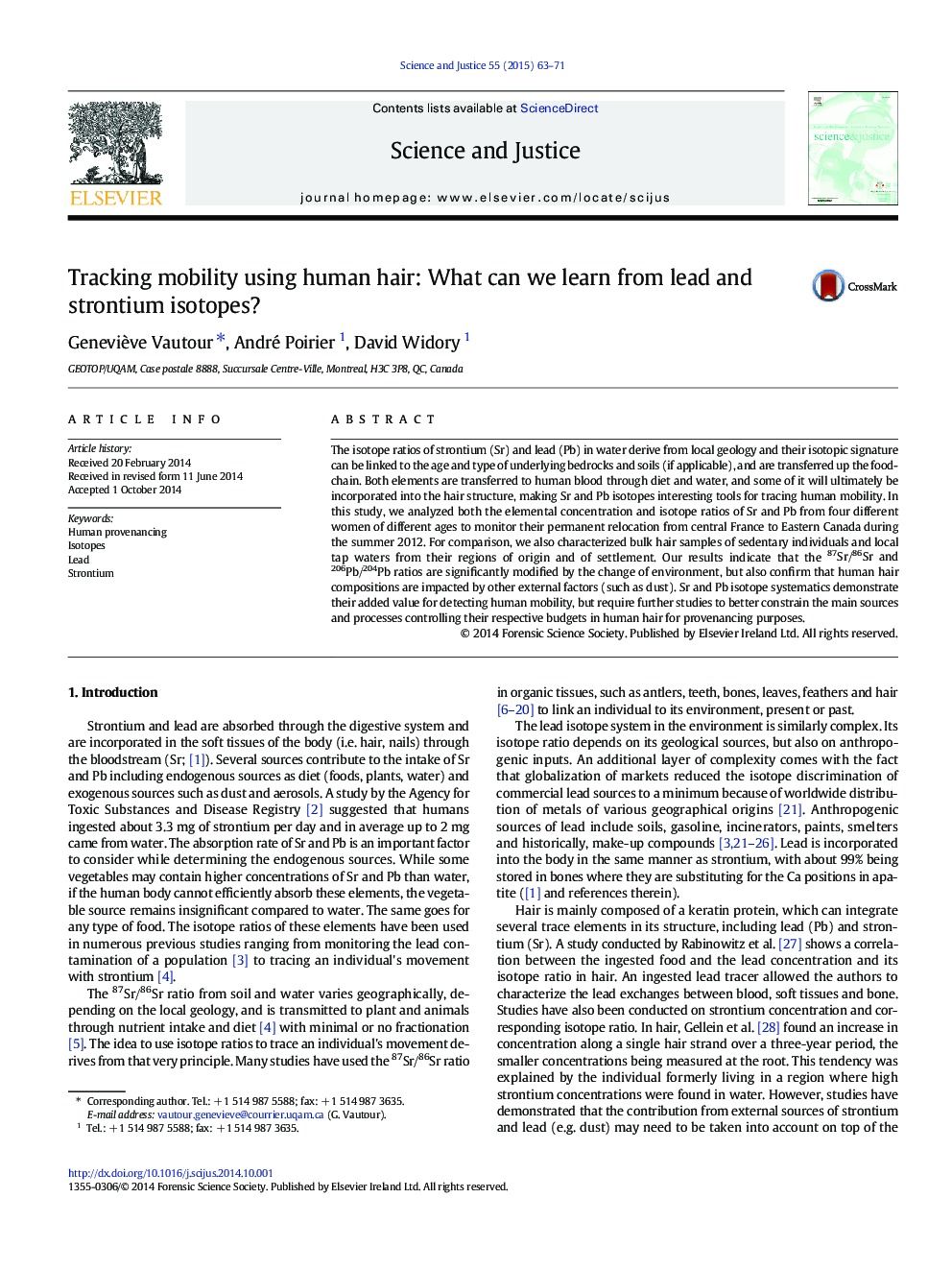| کد مقاله | کد نشریه | سال انتشار | مقاله انگلیسی | نسخه تمام متن |
|---|---|---|---|---|
| 106970 | 161732 | 2015 | 9 صفحه PDF | دانلود رایگان |
• Pb and Sr isotopes are emerging and promising tools for tracking human mobility.
• Our data confirm that water is not the only reservoir controlling Pb and Sr isotopes in human hair.
• Children preferentially absorb Pb compared to adults.
The isotope ratios of strontium (Sr) and lead (Pb) in water derive from local geology and their isotopic signature can be linked to the age and type of underlying bedrocks and soils (if applicable), and are transferred up the food-chain. Both elements are transferred to human blood through diet and water, and some of it will ultimately be incorporated into the hair structure, making Sr and Pb isotopes interesting tools for tracing human mobility. In this study, we analyzed both the elemental concentration and isotope ratios of Sr and Pb from four different women of different ages to monitor their permanent relocation from central France to Eastern Canada during the summer 2012. For comparison, we also characterized bulk hair samples of sedentary individuals and local tap waters from their regions of origin and of settlement. Our results indicate that the 87Sr/86Sr and 206Pb/204Pb ratios are significantly modified by the change of environment, but also confirm that human hair compositions are impacted by other external factors (such as dust). Sr and Pb isotope systematics demonstrate their added value for detecting human mobility, but require further studies to better constrain the main sources and processes controlling their respective budgets in human hair for provenancing purposes.
Journal: Science & Justice - Volume 55, Issue 1, January 2015, Pages 63–71
